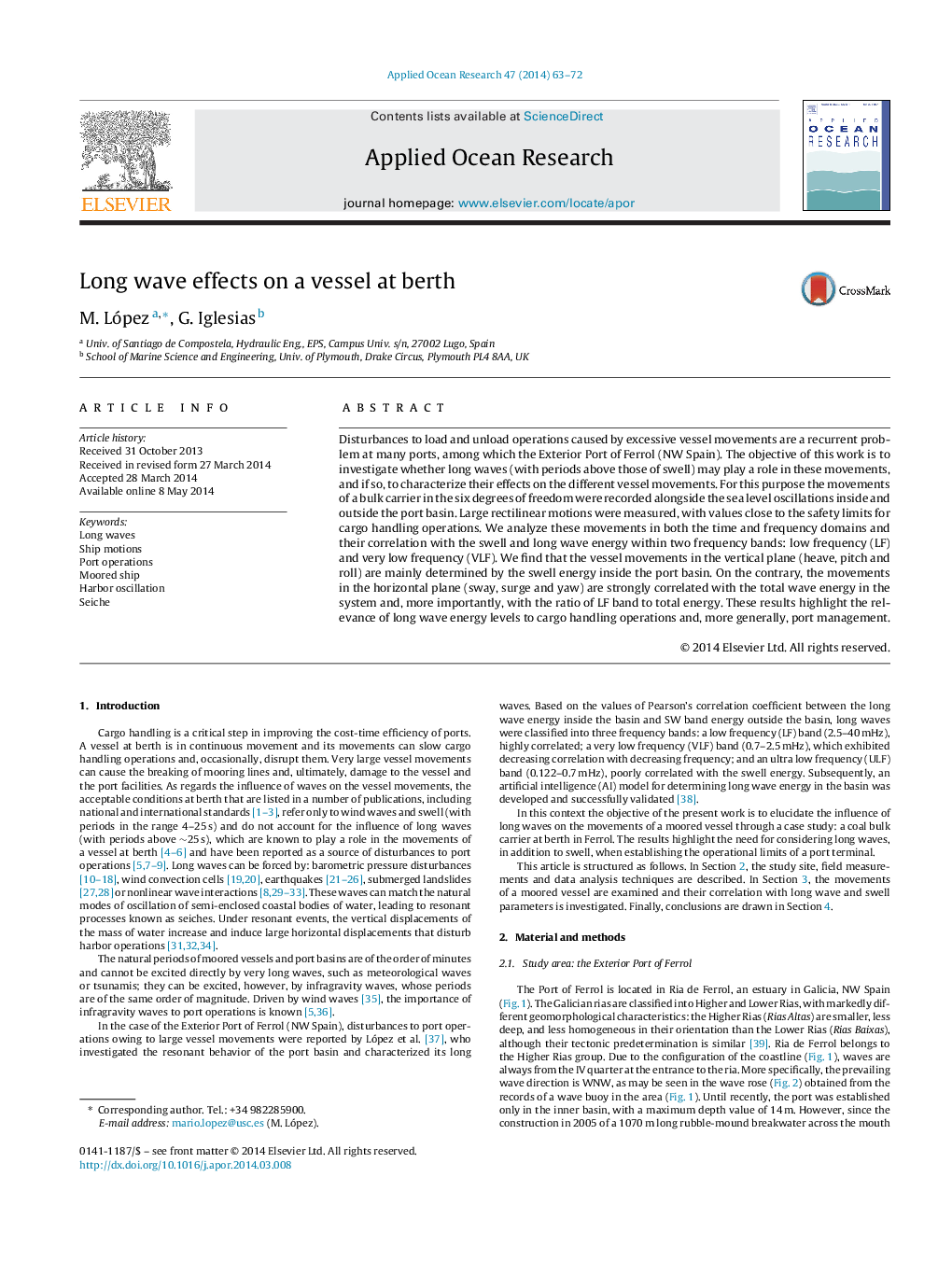| Article ID | Journal | Published Year | Pages | File Type |
|---|---|---|---|---|
| 1720041 | Applied Ocean Research | 2014 | 10 Pages |
•We analyze the motions of a vessel at a berth with high levels of long wave energy.•We examine their dependence on the energy in the low and very low frequency bands.•Vertical vessel motions are governed by the swell, with little long wave influence.•Instead, horizontal vessel motions depend on the ratio of LF band to total energy.•Operational criteria for safe working conditions should include a long wave threshold.
Disturbances to load and unload operations caused by excessive vessel movements are a recurrent problem at many ports, among which the Exterior Port of Ferrol (NW Spain). The objective of this work is to investigate whether long waves (with periods above those of swell) may play a role in these movements, and if so, to characterize their effects on the different vessel movements. For this purpose the movements of a bulk carrier in the six degrees of freedom were recorded alongside the sea level oscillations inside and outside the port basin. Large rectilinear motions were measured, with values close to the safety limits for cargo handling operations. We analyze these movements in both the time and frequency domains and their correlation with the swell and long wave energy within two frequency bands: low frequency (LF) and very low frequency (VLF). We find that the vessel movements in the vertical plane (heave, pitch and roll) are mainly determined by the swell energy inside the port basin. On the contrary, the movements in the horizontal plane (sway, surge and yaw) are strongly correlated with the total wave energy in the system and, more importantly, with the ratio of LF band to total energy. These results highlight the relevance of long wave energy levels to cargo handling operations and, more generally, port management.
